Capitol Reef is a lesser-known natural marvel in Utah. This does not, however, make it any less magnificent than the other four of the powerful five national parks. The optimum time to visit Capitol Reef National Park is a hotly debated issue. In this beautiful park, we think that each season may provide incredible adventure! So, without further ado, let’s have a look at the various delights that await visitors to Capitol Reef National Park at different times of year.
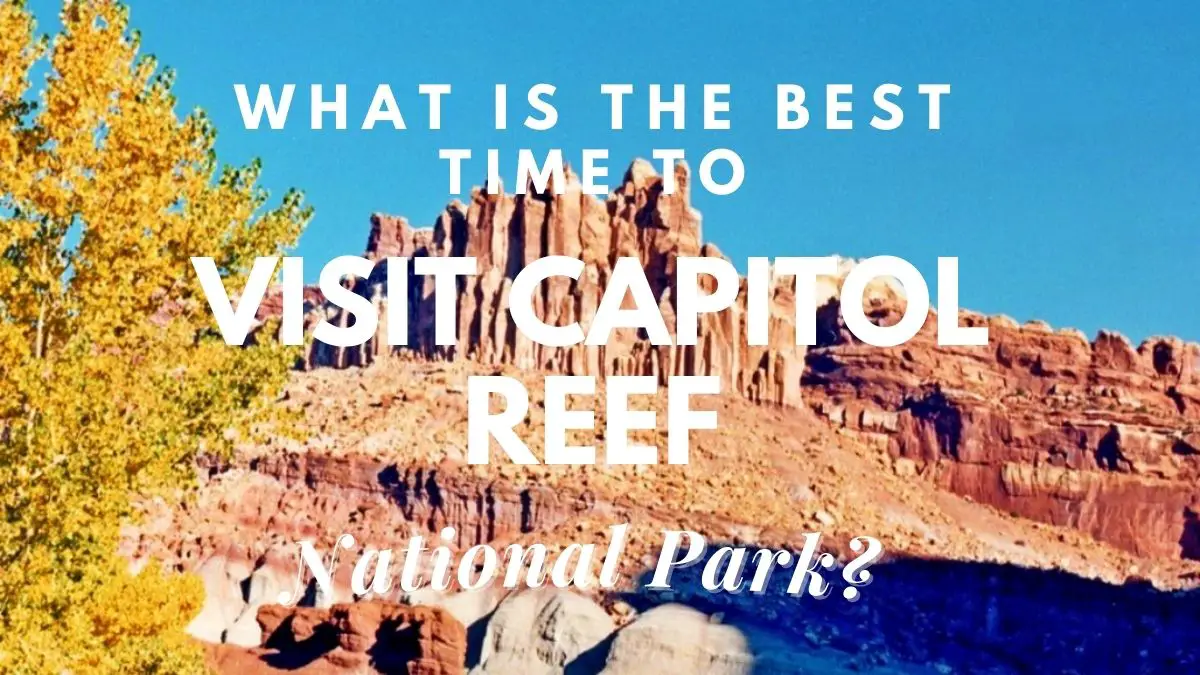
Visiting Capitol Reef National Park in Spring
Capitol Reef’s spring will most likely be considerably colder than you think.
While the landscape blossoms, temperatures typically vary from the upper 60s to the low 10s.
Mild rainstorms are also likely to occur during the trip.
However, because Capitol Reef is a dry desert area, any prolonged showers are unlikely to catch you off guard.
Short days with long periods of sunshine will be ideal for a variety of activities, including hiking and riding.
In the following months, the Fruita Orchards will bloom, providing magnificent views and fragrances to enjoy while exploring.
During the spring season, crowds will be lighter, allowing for more solo exploration of the trails and valleys.
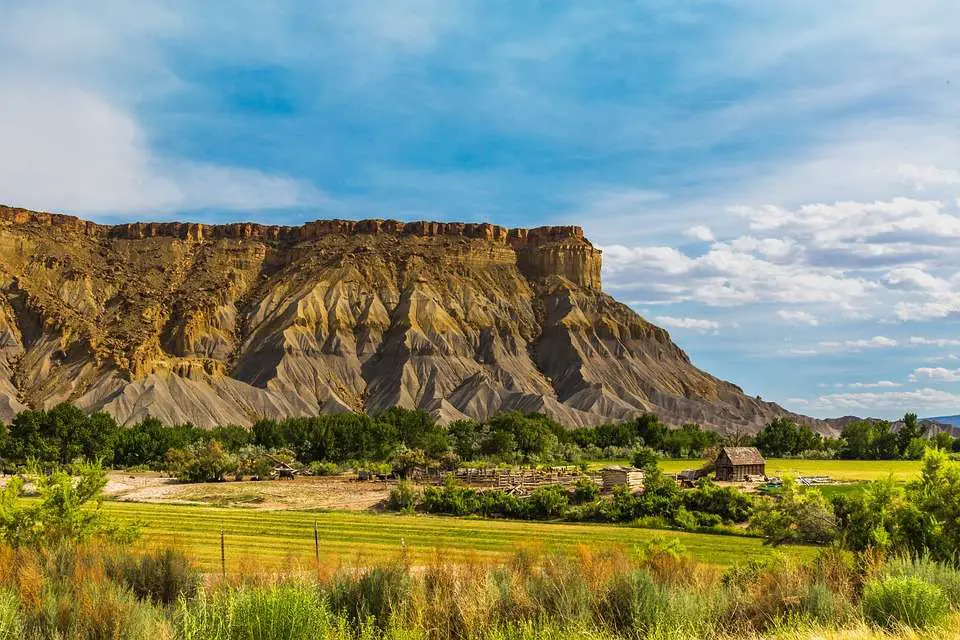
Read: Is Traveling A Hobby? The Ultimate Guide To An Exciting Way Of Life
Learn about the Downsides Of Traveling As A Hobby
Visiting Capitol Reef National Park in summer
Summer at Capitol Reef is not as hot as it is in many other parks in the Southwest.
On paths with no shade, temperatures will seldom surpass 100 degrees Fahrenheit.
Many trails include shaded sections in the event of a heat wave, and trips may be planned properly using Parkside information.
During the later summer months, travelers should exercise caution because flash flood season will be in full swing.
While flash flooding is uncommon, explorers should be prepared in the event that it does happen and know how to protect themselves and their loved ones safe.
Before you leave the park, pay a visit to the Gifford House Store and Museum, which has longer hours throughout the summer!
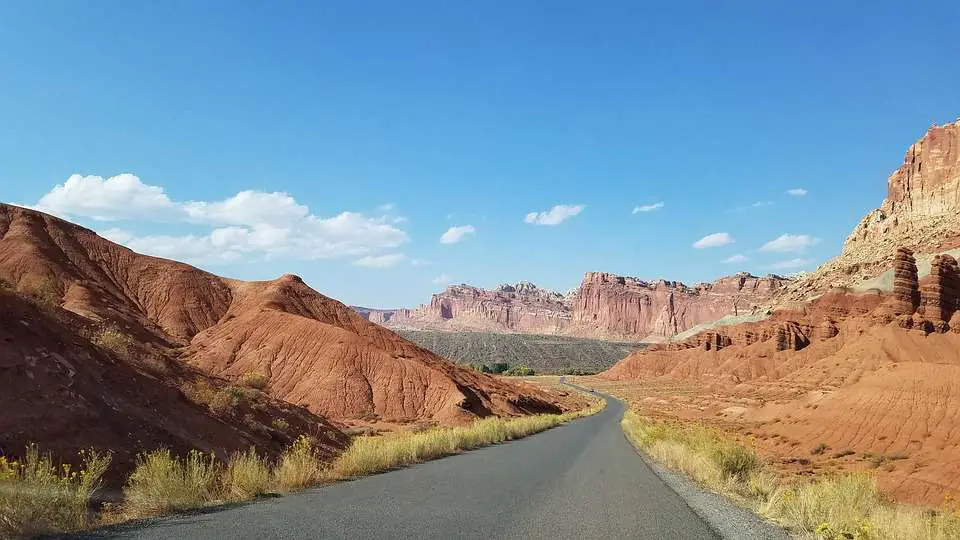
Read: 21 Fun Facts About Capitol Reef National Park You Should Know
Learn about Capitol Reef National Park has a variety of lodging options
Visiting Capitol Reef National Park in fall
Capitol Reef’s hiking and bike paths will become more active in the autumn as the park begins to chill in preparation for winter.
During the fall, there are plenty of peaches, plums, and pears to be had since the harvest is just around the corner!
Exploring the fruit tree orchards creates a very lovely scenario that some may consider unique in a high desert setting.
Because the park is less crowded when the weather cools in the late autumn, this is the perfect time to come if you don’t like crowds.
The Park will be comfortable warm throughout the day, suitable for trekking and camping.
Temperatures drop to a bearable cold as the sun sets, hovering in the mid-40s to low 50s.
Bring a warm sleeping bag and insulated tents if you plan on camping in this national park as part of your journey. When it’s time to go to bed, that cold might be a pain!
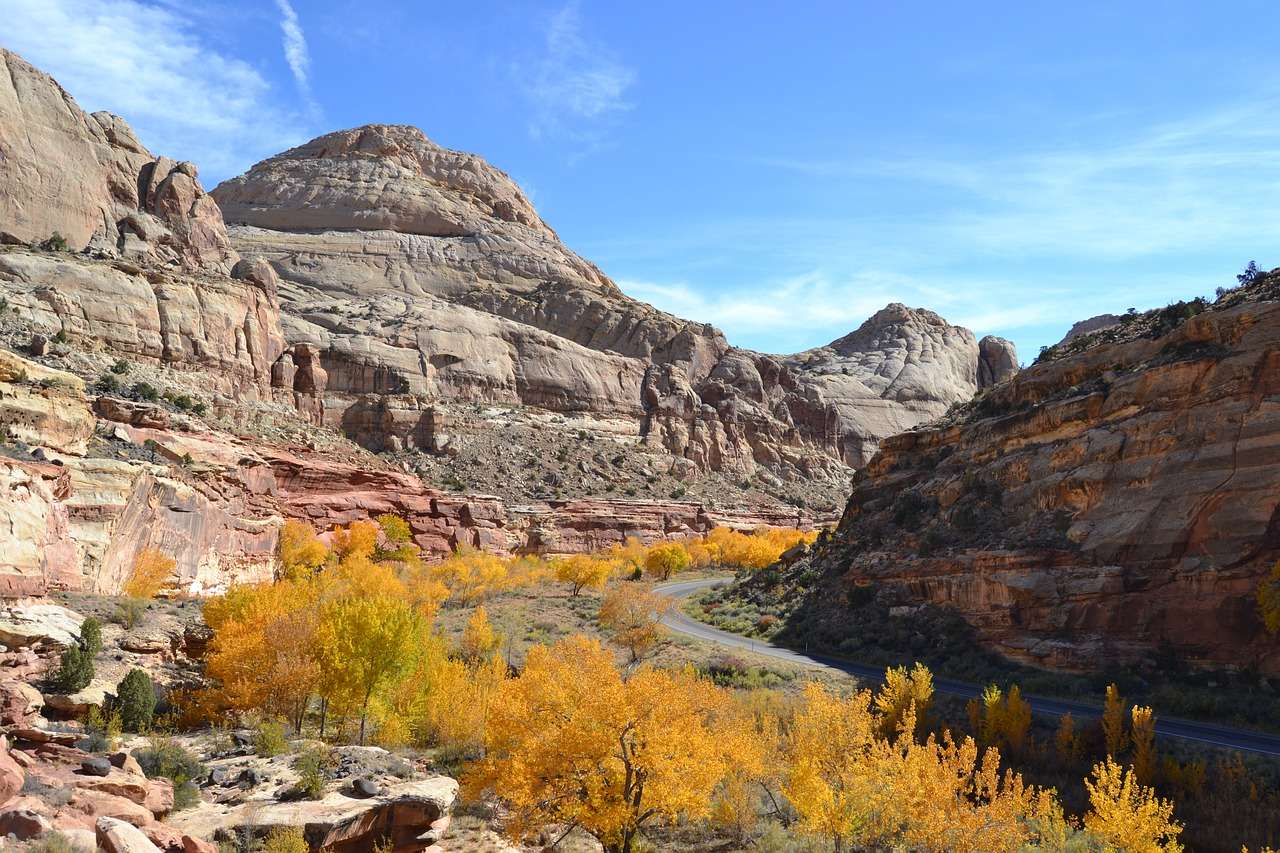
Visiting Capitol Reef National Park in winter
Capitol Reef National Park is unusually quiet in the winter, with the park practically vacant during the coldest months of the year.
This wonderful setting is the private snowy playground you always desired as a child, with mild snowfall and stunning sandstone spires!
Temperatures seldom fall below freezing and are usually about 10-15 degrees Fahrenheit.
Backcountry skiing, snowshoeing, and even the occasional offroading trip are all possibilities when it snows.
Overall, if you’re looking for a calm beautiful retreat with lots of thrills, winter is the best time to visit Capitol Reef!
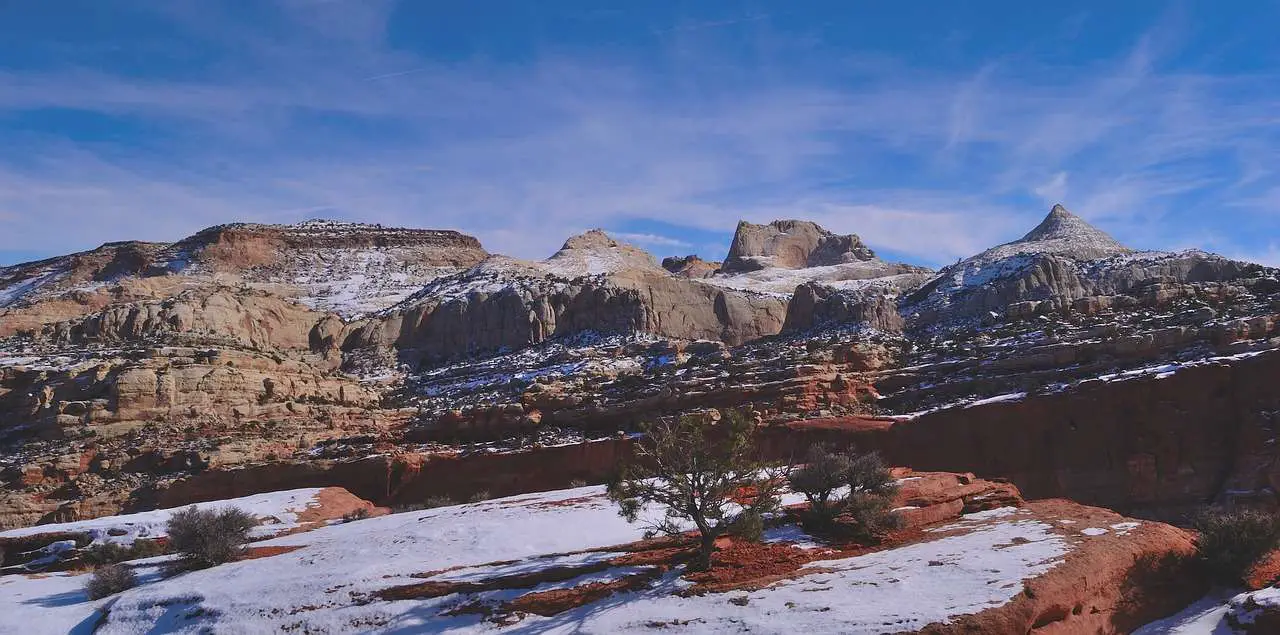
What is the best time to visit the Capitol Reef National Park?
Any time of year is ideal for a visit to Capitol Reef! The changing seasons offer diverse landscapes, activities, and isolation possibilities.
Some think spring is the finest, summer may be scorching but also quite pleasant, and winter, while freezing, is certainly lovely.
You’ll be able to see Capitol Reef at any time of year, and you’ll be in awe of its magnificent beauty!
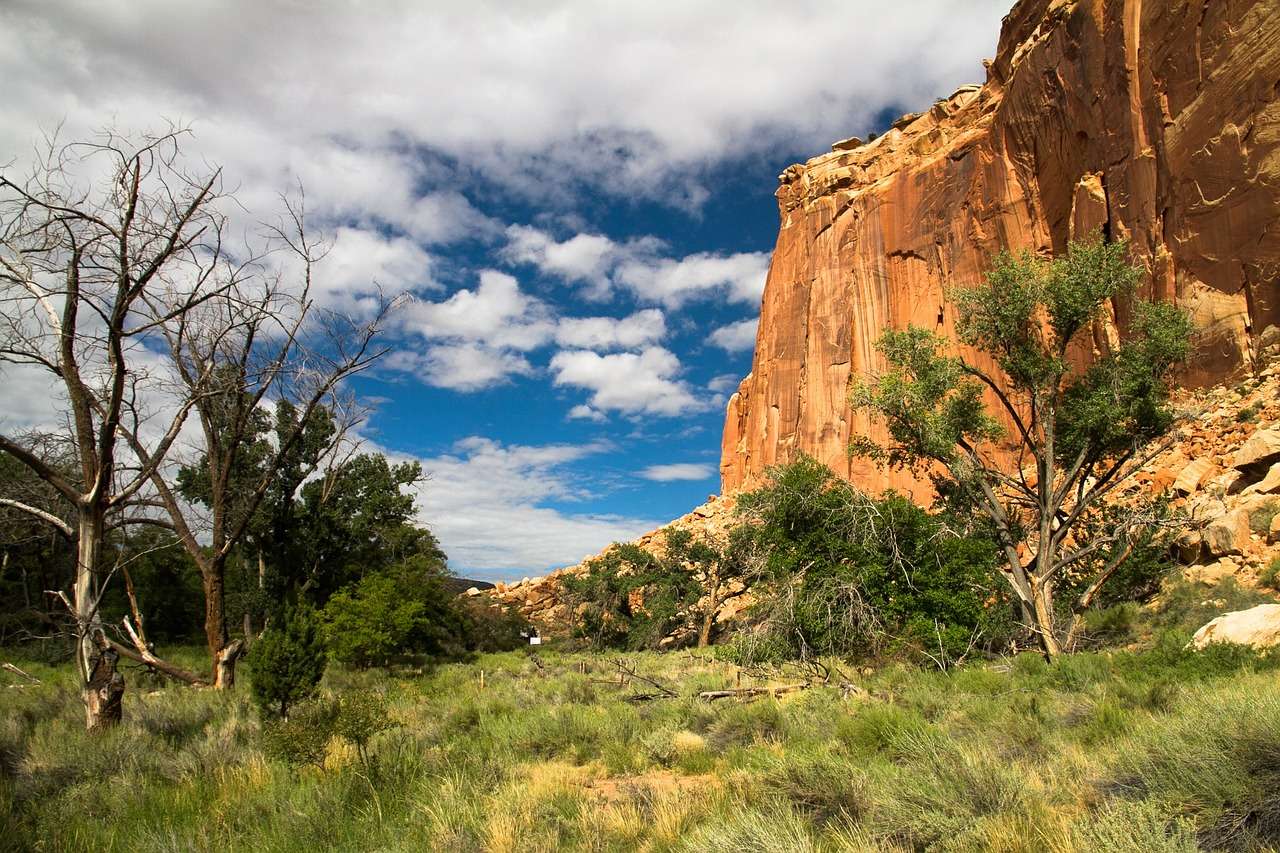
Things to do at the Capitol Reef National Park
Now you are aware about the best time to visit Capitol Reef National Park.
Along with that, let’s also take a look at the things that you should do during your visit.
Highway 24
The primary route that goes through the park is Highway 24.
Within the park’s borders, this route travels east-west for 16 kilometers, following the Fremont River.
Highway 24 is a very beautiful piece of road.
The route twists and turns along the Fremont River towards the east, passing enormous domes and Navajo sandstone cliffs.
The vistas open out as you reach Fruita, as you travel through a valley rich with orchards and old houses along the Fremont River.
You’ll travel by massive red sandstone mountains, cliffs, and rock formations as you continue west into Torrey.
Highway 24 has no admission charge; therefore, you may visit this portion of Capitol Reef without paying an entrance fee.
Sunset and Panorama points, the petroglyphs, and a few hiking paths are all part of this “no cost zone” of Capitol Reef.
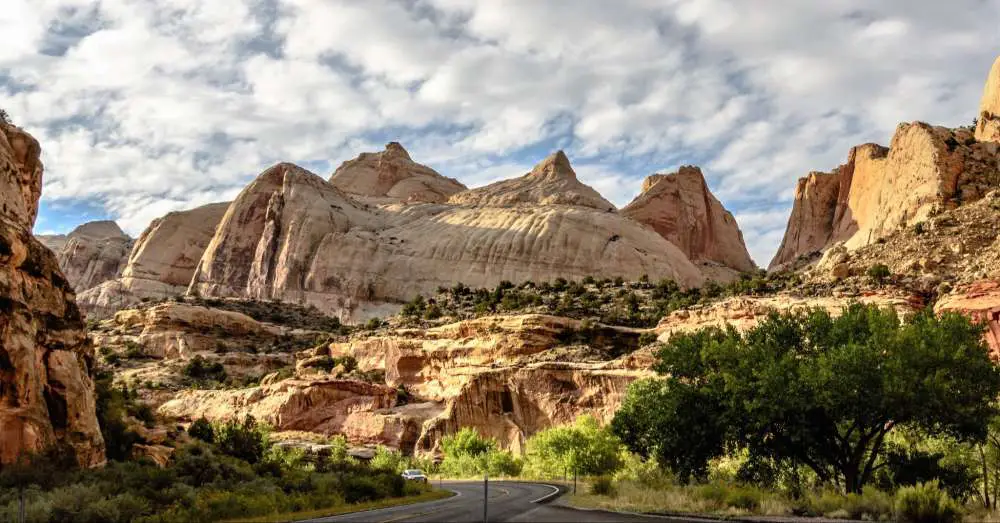
Get to the panoramic viewpoint
Panorama Point provides stunning views of Highway 24 as it snakes through the park.
This overlook is immediately off Highway 24 and provides a beautiful view of Capitol Reef Park in a short amount of time.
Getting There: There will be a sign indicating Panorama Point and Sunset Point on Highway 24.
Turn right here and travel a short distance on a dirt road to Panorama Point’s parking area.
Sunset Point and the Goosenecks Overlook may be reached by continuing along this route.
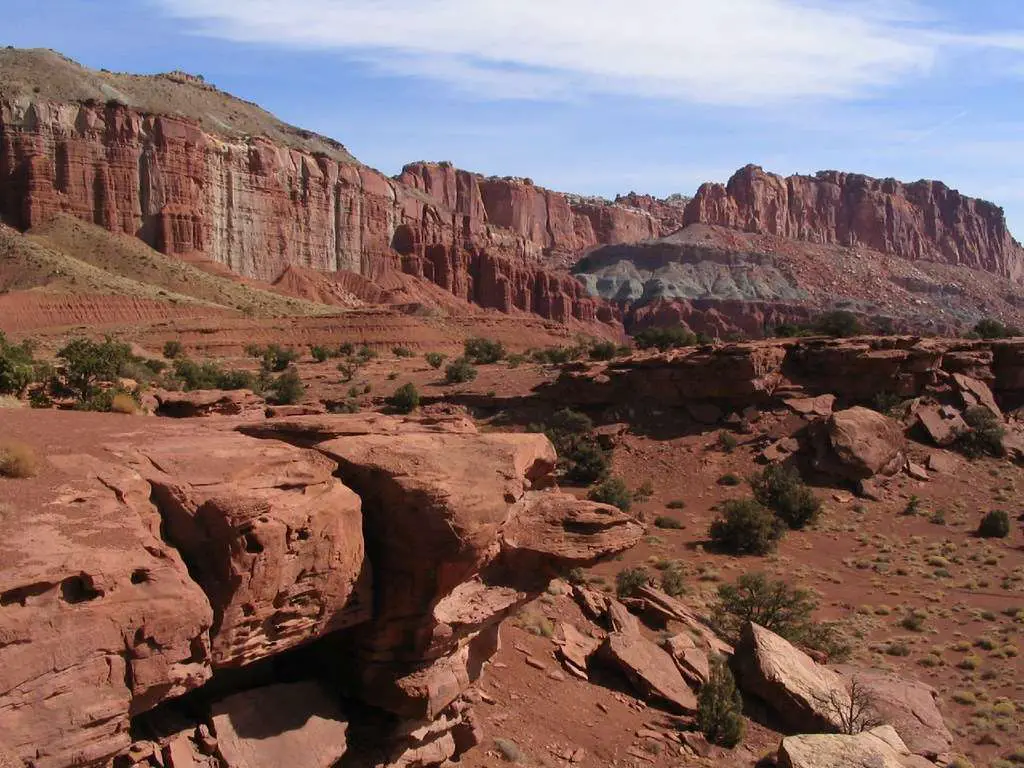
Sunset point
Follow the gravel access road until it comes to an end at a tiny parking space.
Two separate pathways lead to two different vistas from the parking area (Sunset Point and Goosenecks Overlook).
Sunset Point is a 0.8-mile round-trip easy trek that leads to a beautiful viewpoint.
Sunset Point got its name from the fact that it is one of Capitol Reef’s greatest places to watch the sunset.
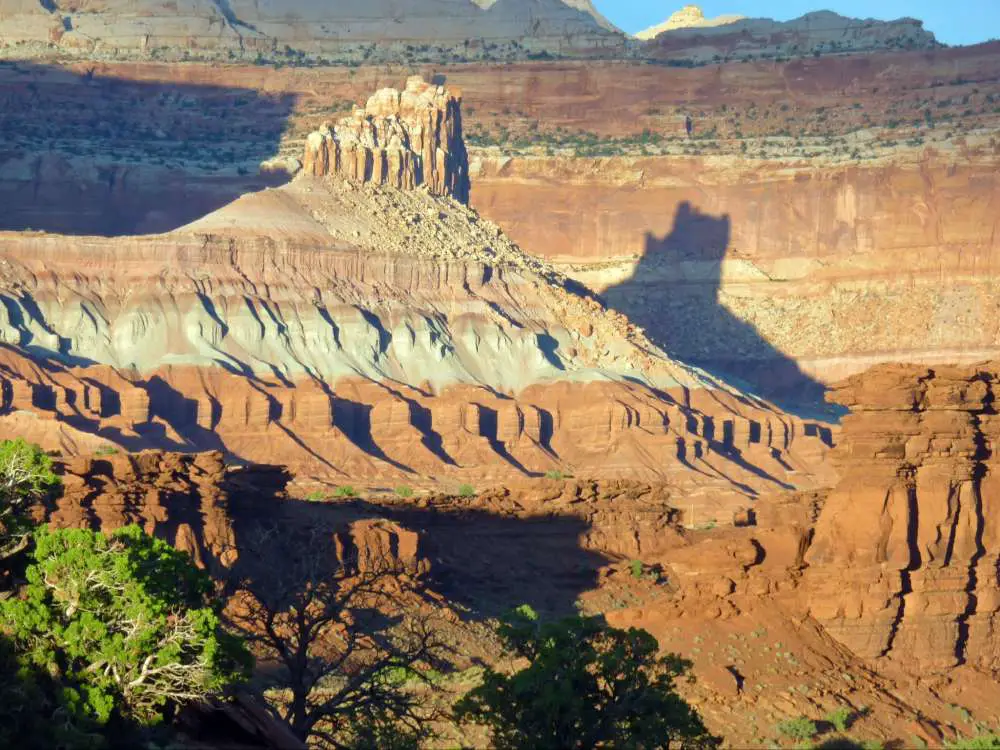
Overlook Goosenecks
Return to the parking area, then walk upward (0.2 miles round way) to a viewpoint overlooking the Goosenecks.
The Sulphur Creek dug up a canyon here, with its twisting route like a gooseneck.
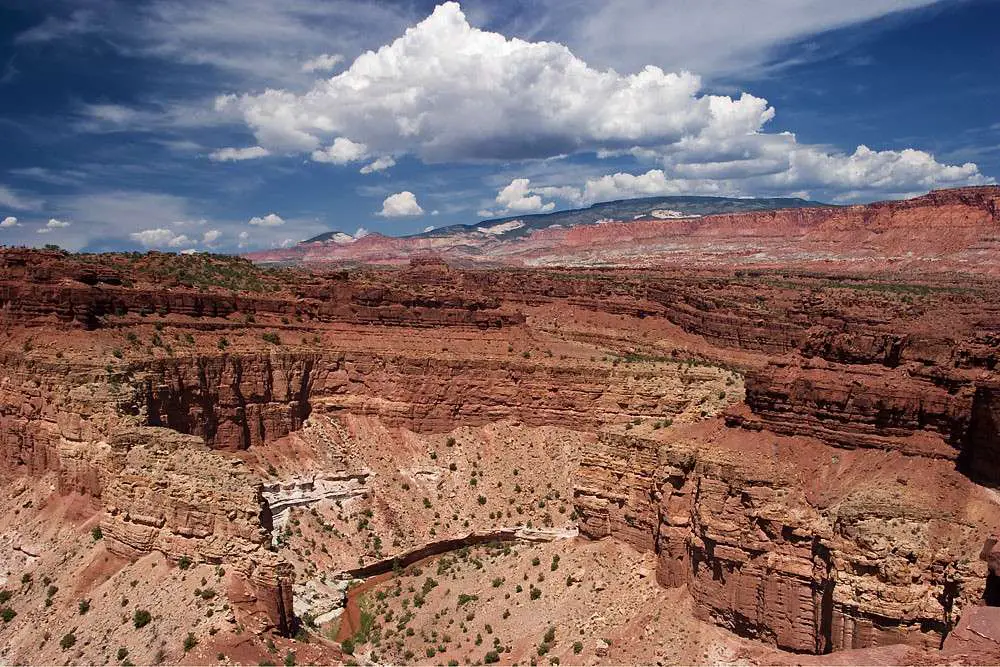
Check out petroglyphs
On the journey along Highway 24, you may view old Native American rock art figures (petroglyphs).
Parking is available in a small area on Highway 24 between the Hickman Bridge trailhead and Fruita.
It’s only a short walk to a viewpoint where these images etched into the rock wall may be seen.
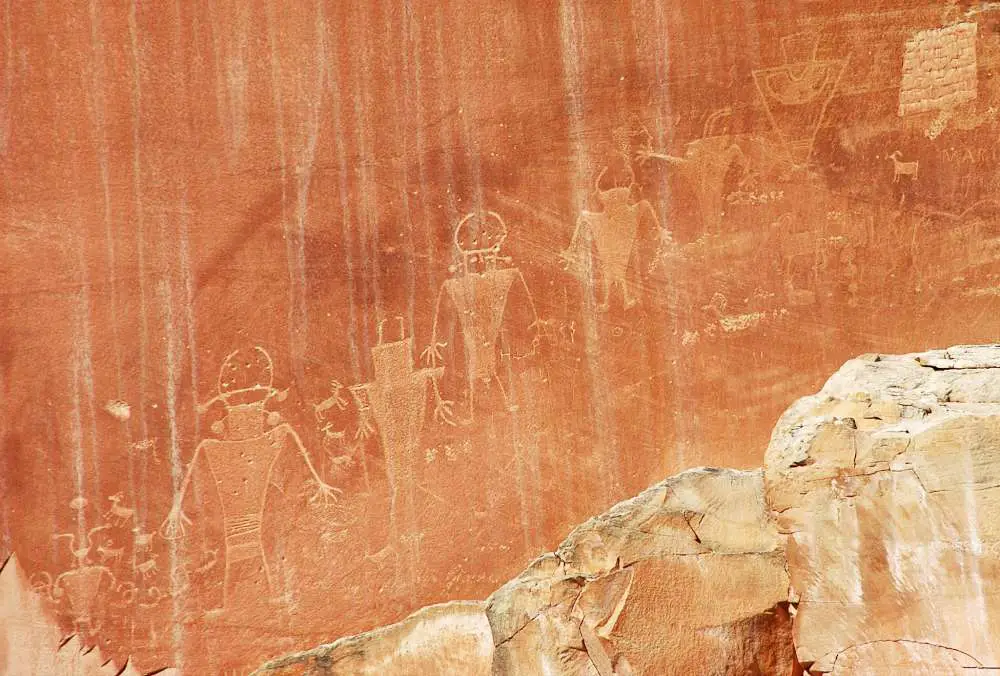
Explore the historic Fruita neighborhood
Capitol Reef National Park’s center is the historic Fruita neighborhood.
The tourist center, the start of numerous fantastic treks, campsites, and historic buildings are all located here.
Pioneers began to settle in the region in the late 1800s.
Nels Johnson was the first to purchase land, followed by other members of the Church of Jesus Christ of Latter-day Saints.
Orchards were established, and sorghum was grown for molasses and syrup.
The one-room schoolhouse, the Gifford House and barn, and the orchards, which are currently maintained by the National Park Service, are the only remaining original structures.
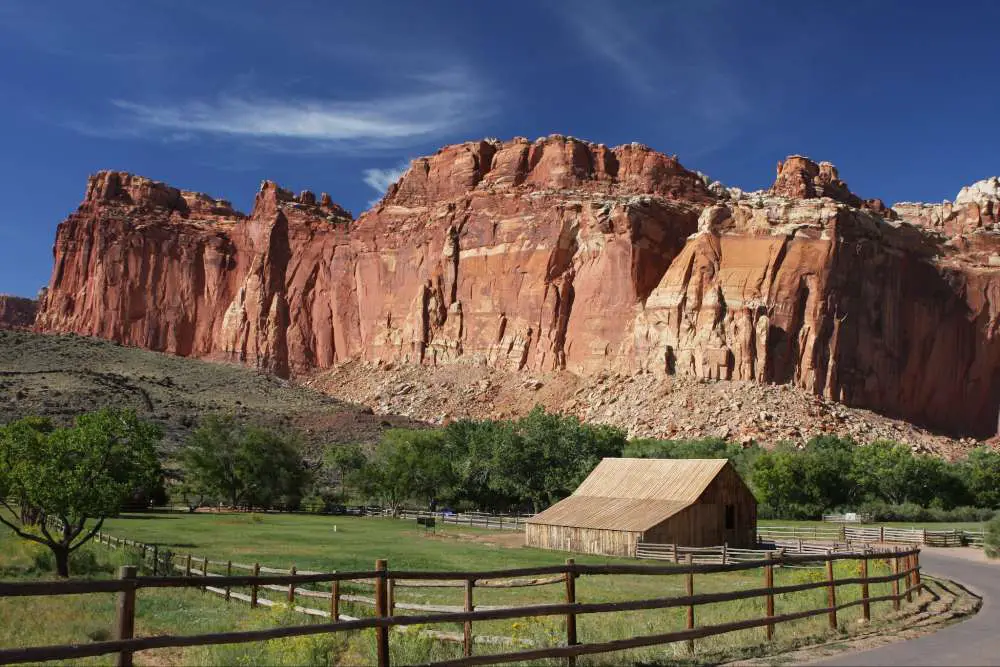
Go for a hike
Hiking is one of the greatest things to do in Capitol Reef National Park.
The scenic roads are beautiful, but hiking paths are the best way to explore the canyons and obtain a bird’s eye view of the park.
There are 15 day treks in the park’s central area, near Fruita.
There are also a variety of additional walks in the park’s more isolated regions, such as Cathedral Valley and Notom-Bullfrog Road.
Here are a few of our favorites to help you narrow down the huge number of day walks. The hikes are all round-trip distances.
Read our post 16 Epic Day Hikes in Capitol Reef National Park for the whole list.
Cassidy Arch is a famous landmark in the United States.
Moderate distance of 3.4 miles. This is one of Capitol Reef National Park’s most exciting paths.
This short trek offers breathtaking views of the Grand Wash and the opportunity to stand on Cassidy Arch.
Hickman Bridge is a bridge in Hickman, Texas.
Moderate distance of 1.8 miles. One of the greatest short walks in Capitol Reef is this one.
Hike up to a magnificent overlook with a view of Highway 24 after walking along the Fremont River.
Hickman Bridge, a huge natural arch nestled away at the canyon’s rear, is where the trek finishes.
Next hike on the list is Grand scrubbing.
It’s only 4.8 miles, and it’s a breeze. Hike through a broad canyon that is similar to the Zion Narrows but does not require crossing a river.
If you travel the whole length of the canyon, it will be a lengthy journey, but you may turn back when you are ready.
The greatest section of the trek, when the canyon narrows the most (known as The Narrows), is approximately a mile from the start, thus this hike might be as short as 2.5 miles.
Cohab Canyon is a canyon in Cohab, Arizona. 3.4 miles, moderately difficult.
This short but challenging walk provides breathtaking views of Fruita and Highway 24.
This trek is one of the most straightforward ways to obtain a bird’s eye perspective of Fruita.
The Chimney Rock Trail is a popular hiking route in the area.
The distance is 3.6 miles, and the difficulty level is moderate.
This path stays reasonably flat as it makes a loop along the sandstone mountains after a short and tough ascent. Fruita’s vistas and the water pocket fold are breathtaking.
Overlooking the rim. 4.6 miles, moderately difficult.
The climb to Rim Overlook is difficult, but the view is spectacular! This viewpoint lies high above Fruita, perched on the brink of a cliff.
One of the greatest views along the waterpocket fold is from here.
Knobs of the Navajo people is another great hike. 9.5 miles, moderately difficult.
Our favorite hike in the park is this one. You’ll start by hiking to the Rim Overlook.
The route continues to the Navajo Knobs, which offer 360-degree vistas and are probably one of Capitol Reef National Park’s greatest viewpoints.
The Cathedrals Trail is a popular hiking route in the area. 2.5 km of gentle walking This short trek provides excellent views of Cathedral Valley’s monoliths.
The first half of this trip, as you walk beside this series of sandstone formations, is the greatest portion, in my view.
The route comes to a halt at the summit of a hill, offering panoramic views of Cathedral Valley.
Headquarters Canyon is an easy hike available for anyone.
It’s only 2.6 miles, and it’s a breeze. This trek through a slot canyon is quick and lovely.
Because it’s in a secluded part of Capitol Reef, along Notom-Bullfrog Road, there’s a good possibility you’ll have it to yourself.
Burro Wash, Cottonwood Wash, and Sheets Gulch are all places where you may wash your clothes.
On Notom-Bullfrog Road, these three slot canyons are quite near to one another.
They are moderate to difficult and range in length from 7 to 14 miles round-trip.
In the canyons, there might be water ponds. These are hikes to consider if you’re searching for a difficult slot canyon.
Sulphur Creek is a tributary of the Missouri River.
This 5.8-mile one-way trek is usually done point-to-point, which necessitates the use of a shuttle vehicle.
Because this is not a well-maintained trail, you’ll need route-finding abilities and previous hiking expertise.
However, if you want to trek into a deep canyon and through a river, comparable to the Narrows in Zion, this is a fantastic trip to consider.
Capitol Reef also has a number of excellent backcountry routes.
Long day treks and overnight hiking expeditions are among them.
This includes Upper Muley Twist Canyon, Lower Muley Twist Canyon, and Halls Creek Narrows.
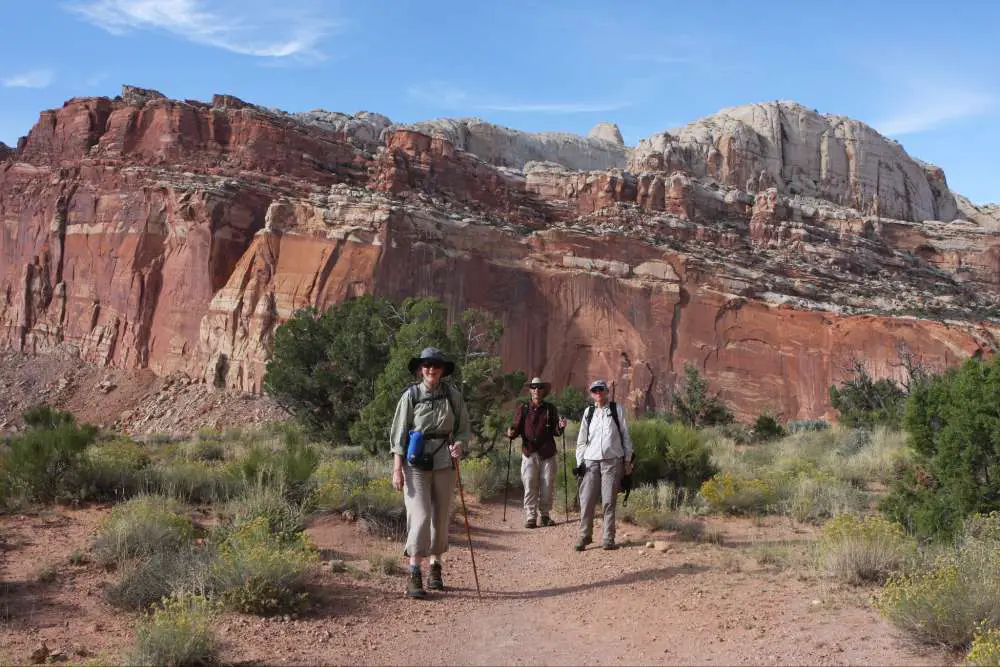
Don’t forget Capitol Reef Scenic Drive
The Capitol Reef Scenic Drive is one of the greatest things to do in the park.
This paved road is 7.9 miles long (one way) and passes through some of the park’s most beautiful scenery.
Scenic Drive runs from Fruita to Capitol Gorge Road.
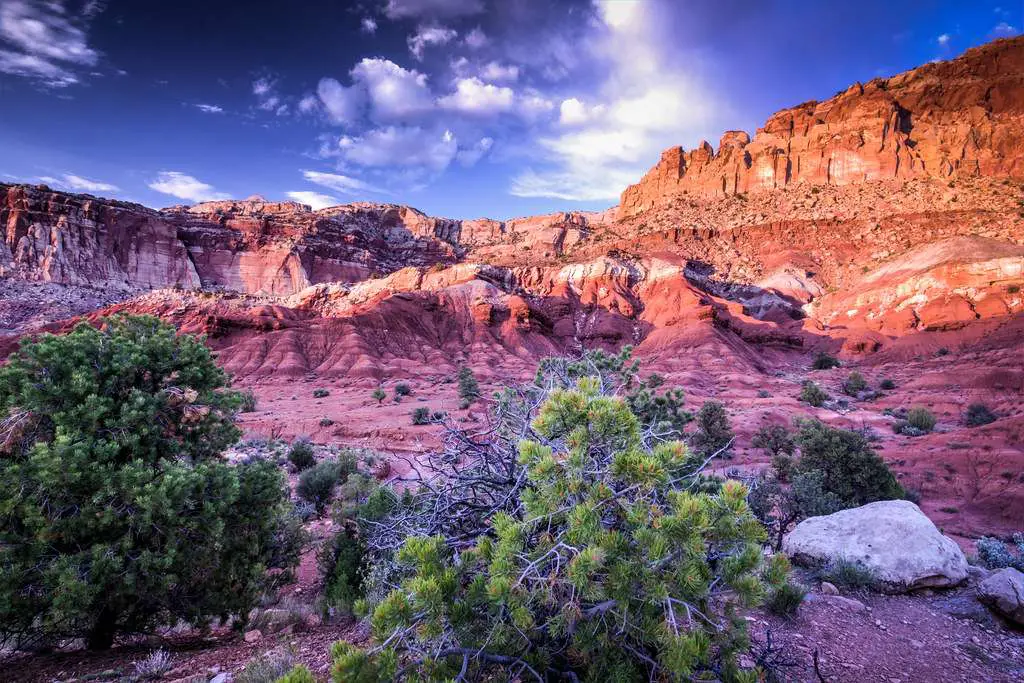
Final words
By following the tips, we shared in this article, you can go all the way to the Capitol Reef National Park. Then you can get the best experiences shared in the park as well.
Proud owner of https://travelyouman.com/

